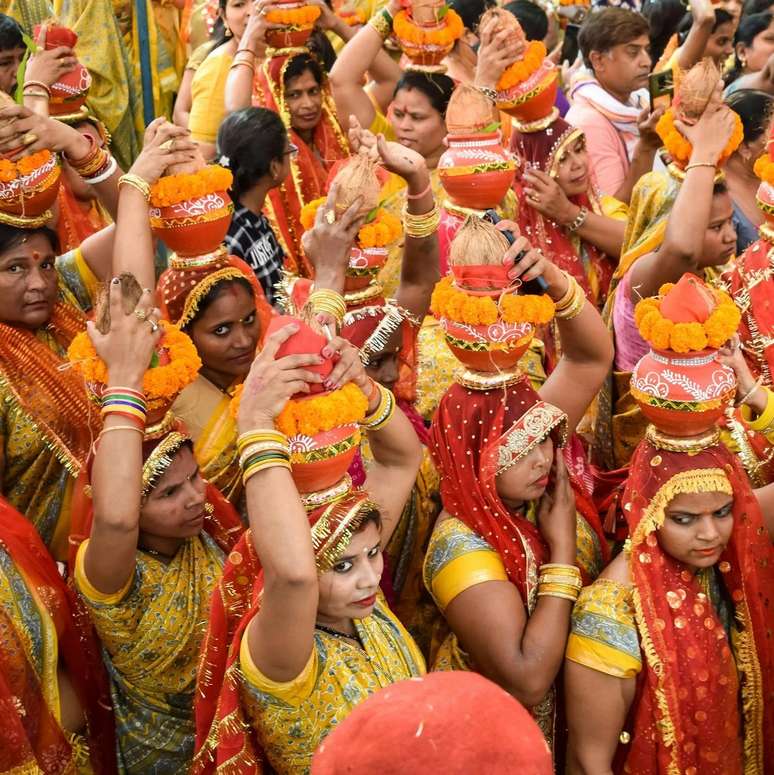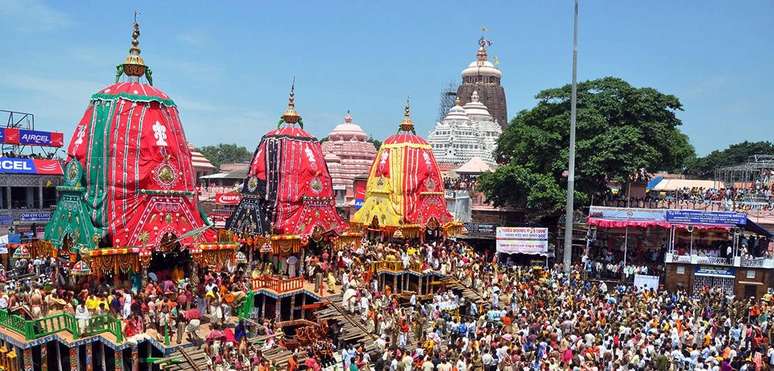It is also the oldest parade of its kind in the world. […]
The India that Brazilian writer Cecília Meireles saw in the 1950s is not so far from the one we see today.
Streets full of people, colorful clothes, present-past (and future?). But what really caught his attention was the procession of the Ratha Yatra, in Puri, in the state of Odisha.
Every year, this city on the eastern coast of India, on the shores of the Bay of Bengal, turns into a major pilgrimage center, not only for the Jagannath Temple, but also for the Hindu festival Ratha Yatra, which in 2024 will be celebrated on July 7.
“It is dangerous to come to India as a mere tourist. Everything here requires prior explanation. Everything here is symbolic, and this symbolism does not always satisfy the demands of Western aesthetics.”
(Travel Chronicles)
India of the Gods
The Ratha Yatra is considered the largest and oldest chariot (‘rath’ in Hindi) procession in the world, when the streets of this temple city are filled with thousands of pilgrims who follow, to the sound of hymns and songs, the procession of three immense floats, in honour of Jagannath, the ‘Lord of the Universe’, and his brothers Balabhadra and Subhadra.
Just as the Brazilian herself explains in the collection Travel Chronicles (Global Editora), these are enormous cars, about 15 meters high, with wheels measuring about two meters in diameter.
Decorated with flowers, paintings, figurines and brass carvings, the wooden carriages carry three deities as they leave the Jagnannath Temple and embark on a three-kilometer journey along Bada Danda (“Grand Avenue”) to the Gundicha Temple, where they rest for a week, before being taken back.

During the procession, Lord Jagannath stops at various places, such as the Mausi Maa Temple, named after his maternal aunt, to eat his favorite dish: sweet fritters.
The festival, which usually brings together people of all religions and castes for nine days, is the only one in India where deities are removed from their original temples. In fact, Rath Yatra is the only day of the year when non-Hindus have the opportunity to see the deities of the Jagannath Puri temple.
Another curiosity is that Jagnannath, in the state of Odisha, is the local name given to Krishna.
“Secular, millennial, eternal gods… Gods who must see all this much better than we do,” concluded Cecília Meireles.
Source: Terra
Ben Stock is a lifestyle journalist and author at Gossipify. He writes about topics such as health, wellness, travel, food and home decor. He provides practical advice and inspiration to improve well-being, keeps readers up to date with latest lifestyle news and trends, known for his engaging writing style, in-depth analysis and unique perspectives.






-s4mtc70aep12.jpeg)

